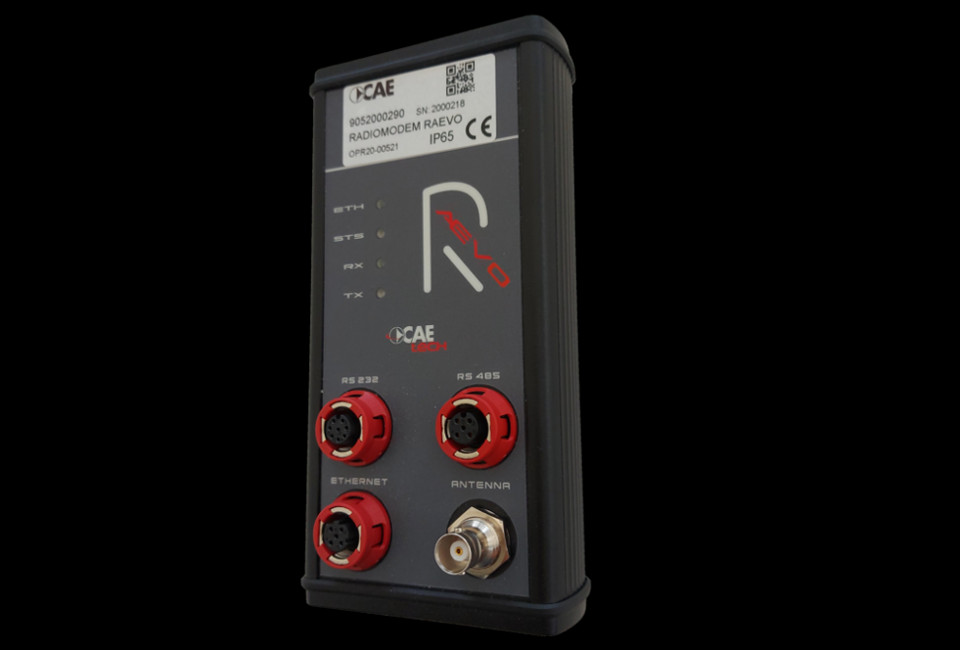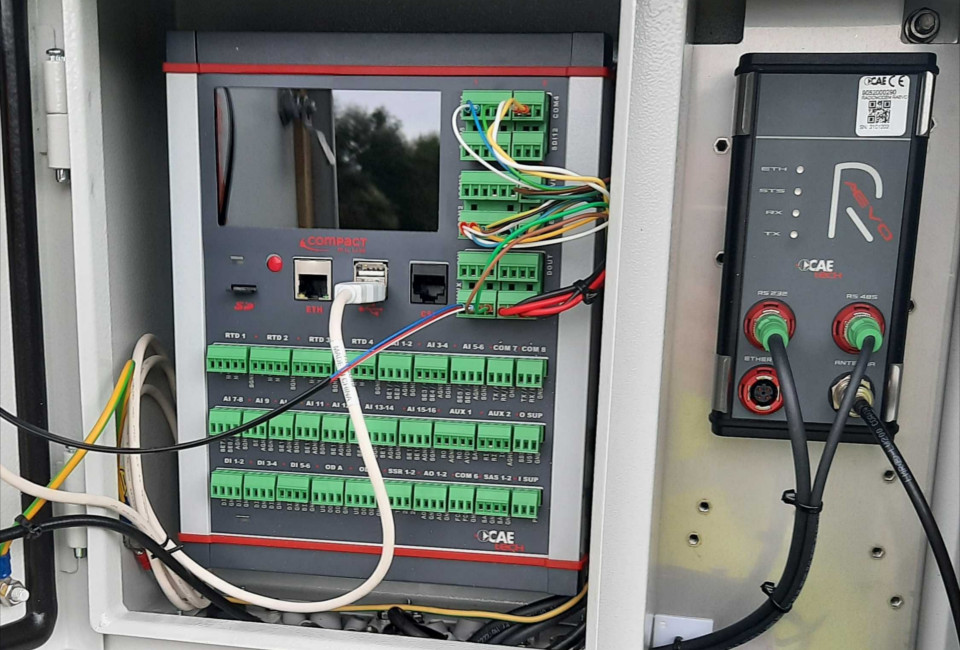Description
RÆVO is a radio modem operating in UHF band. Designed to transport standard IP protocols and to keep very low consumption, it can be usefully employed in the creation of networks distributed throughout the territory.
It is an extremely flexible device that, thanks to the configuration software included, can be used either as a terminal, a repeater or a radio panel for the creation of Point-to-Point and Point-to-Multipoint connections, even with very complex networks.
Moreover, it works both with pairs of frequencies (Tx/Rx) and with a single frequency, in the UHF band. The RÆVO facilitates interfacing with external devices via 3 ports: RS485, RS232 and Ethernet.
As a CAETech product, it is compatible with devices from different manufacturers and implements Zero Breakdown Technology logic, hence it is configurable for sending diagnostic information to the operations centre, in addition to the Forward Error Correction (FEC), a mechanism for detection and subsequent correction of errors.

Features


Download

Technology
- - the attention to detail, starting with the design phase;
- - encoded, tracked and certified production processes;
- - the use of high quality materials;
- - the experience and training of production engineers.
- - redundant elements, which make sure that, if an element breaks, the product sends an alert while operating normally, giving time to intervene with the replacement without losing any data;
- - diagnostic sensors of various types, such as the ones for the verification of:
- o the correct inclination of the product,
- o the quality of the acquired measurement,
- o the value of the voltage input,
- o the status of inputs and outputs,
- o the conditions of the internal temperature,
- o the reliability of the RF link between all devices,
- o etc.

